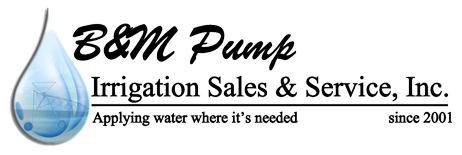Winter Crop Irrigation System Preparation Tips
There are two main types of crop irrigation systems: center pivot and drip. Winter crop irrigation preparation is a must-do for anyone who relies on either system to grow crops, protecting your system from some very expensive damage. Here are some winter irrigation system preparations that you should make, depending on the system you have.
Center Pivot Systems
If you have a center pivot irrigation system, there are a few key steps you should take to properly prepare it for the cold-weather months. They include:
- Before you completely shut your system down for the year, perform a uniformity test to ensure it’s applying water evenly and uniformly. Some things to look for include leaks, missing or malfunctioning sprinklers and pipe damage. Reach out to an irrigation system maintenance company if you notice any problems. This is also a good time to consider a new sprinkler package if your system isn’t performing well.
- Completely remove all water from the system by removing plugs to drain pipes, valves, pumps, sprinklers, booster pumps and anything else above ground. Drain the pump casing to keep water from freezing inside and damaging it.
- Openings in the system are an invitation for rodents to come in and make themselves at home. Secure all system components with a sturdy cover. Also, remember to lock the system control box in the “off” position.
- If there are any parts in need of attention from your irrigation product supplier, get the service you need during the offseason. Gearboxes, drive lines, motors and the engine used to drive the pump may need servicing.
- Do a check of your metering equipment to make sure the flow meter on your pump is working correctly, helping you determine proper operation of the pumping unit.
Drip Systems
Drip systems require much different winter irrigation preparation compared to center pivot systems, mainly in terms of flushing. It can be a complex process. Typical winterizing steps include:
- The entire system should be flushed with water, followed by a chlorination flush, then another flush with water. This step ensures all sediment and other debris, including algae, is cleared from the system.
- Open drain plugs. Remove drain plugs at the lowest points of the system to remove any excess water. Your system will be less likely to freeze during the winter.
- Back flush media filters and drain screen filters. Remove sediment from media filters with a back flush and look for a clean stream of water before opening all drain ports. Then, drain screen filters and check the screen itself to make sure it’s in good condition and free from sediment.
- Drain or completely remove control valves, whenever possible.
- Remove drain plug, all water from pumps and any other system components that may be holding water.
- Secure all electrical components for the winter and get pumping engines serviced, if necessary.
Winter crop irrigation preparations are crucial to maintaining the proper function of your system during the offseason. Reach out to B&M Pump Irrigation Sales & Service, Inc. for any questions on proper winterization procedures, as well as expert guidance on any component maintenance needs you may have.
Categorised in: Irrigation
